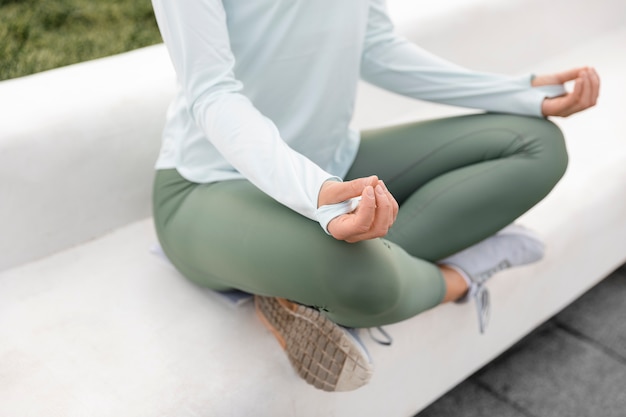
Yoga isn’t just about flexible limbs; it can boost memory, and heart, and bone health. More and more people in the UK are hooked on yoga, spending around £790 million annually on classes and gear.
While some forms of yoga have gotten quite unusual, like dog yoga or poses on paddle boards, solid scientific evidence confirms its benefits. A UCLA study revealed that a three-month yoga and meditation course was better at reducing age-related brain changes than traditional memory exercises. Another study found yoga improved sleep in breast cancer survivors.
Former ad executive Lucy Edge, 53, turned to yoga instead of antidepressants during a depression. Although she didn’t achieve the ‘yoga body,’ she returned from a six-month stint in India feeling happier and more content. She now advocates for yoga’s benefits, backed by over 300 clinical trials listed on her website, Yoga Meds.
To improve memory, consider adding yoga to your routine instead of just relying on puzzles like Sudoku. A UCLA study with 25 adults over 55 compared 12 weeks of yoga and meditation to memory exercises. The yoga group saw better improvements in spatial and visual memory, reduced depression and anxiety, and increased stress resilience.
For heart health, a 2014 review found yoga can lower heart disease risk just as effectively as traditional exercises like brisk walking. Yoga helps reduce stress, a major factor in heart disease, and can improve blood pressure, cholesterol, and weight.
For beginners, try starting with something gentle like Kundalini yoga, which involves breathing techniques, meditation, and chanting, or restorative yoga, which uses bolsters and cushions for support. Both can help alleviate stress.
Yoga is also beneficial for back pain. Sarah Shone, a physiotherapist and yoga teacher, integrated yoga into rehabilitation programs for back pain with great success. The National Institute of Clinical Excellence includes yoga as a recommended exercise for lower back pain. Yoga helps improve muscle strength, flexibility, and bone density, making it versatile for many health conditions.
If you’re new to yoga, inform your instructor about any health issues you have. Start with gentle styles like Hatha or Iyengar yoga. If you have a specific condition, check if you can get subsidized yoga through an exercise referral scheme.
Good props can enhance your yoga experience. When choosing a yoga mat, consider factors like its thickness, weight, and length based on your needs and where you’ll use it. For extra support, especially for joints, opt for thicker mats.
The Valka Yoga Cork Mat, priced at £69.95, is a great choice. It’s eco-friendly, durable, and thick enough to support your joints. Cork is also naturally antimicrobial and odor resistant. This mat also comes with a carry strap and a warranty, making it a solid investment.
A yoga block, like the Valka Yoga Block at £19.95, can help you achieve difficult poses by providing extra length and stability. Cork blocks are sturdy and offer better grip compared to foam blocks.
Whether you’re flexible or not, there’s a yoga style for everyone. Yin or Restorative yoga offers a relaxing experience with props under candlelight. Vinyasa Flow is more energetic and connects movements with breath. Iyengar focuses on alignment and uses props, making it great for beginners. Anusara offers a modern, upbeat take on yoga, often set to music. Yoga Therapy is specialized for healing from injuries or illnesses.
Enjoy exploring which type of yoga works best for you and feel the benefits for both mind and body.




